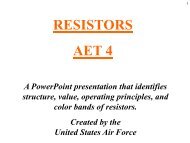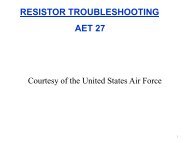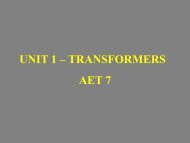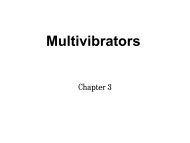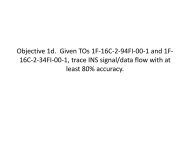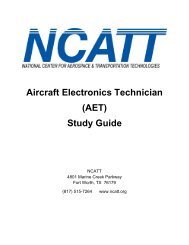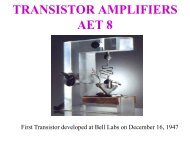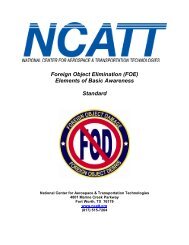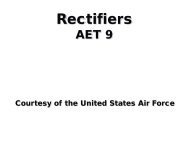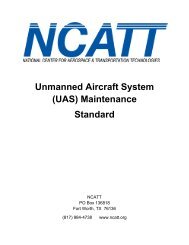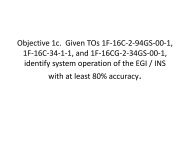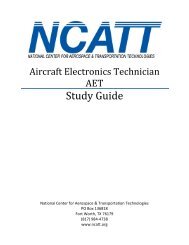Foreign Object Elimination Elements of Basic Awareness ... - NCATT
Foreign Object Elimination Elements of Basic Awareness ... - NCATT
Foreign Object Elimination Elements of Basic Awareness ... - NCATT
Create successful ePaper yourself
Turn your PDF publications into a flip-book with our unique Google optimized e-Paper software.
Page 15 <strong>of</strong> 16<br />
Student <strong>Object</strong>ive:<br />
The student will identify the relationship <strong>of</strong> basic facts and state general principles about the use <strong>of</strong> FOD Barriers<br />
and their removal, and will identify the relationship <strong>of</strong> basic facts and state general principles related to ESD<br />
becoming a source <strong>of</strong> <strong>Foreign</strong> <strong>Object</strong> Damage.<br />
Standard #10 - Hazardous Materials<br />
Instructional <strong>Object</strong>ive:<br />
<strong>NCATT</strong> Training Standards Level (A)<br />
Equivalent FAA Part 147 Level (1)<br />
Identify the basic facts and terms related to the handling, control and disposal <strong>of</strong> Hazardous Material. The<br />
instructor will discuss and explain how improper handling, control or disposal <strong>of</strong> hazardous material can be a<br />
cause <strong>of</strong> <strong>Foreign</strong> <strong>Object</strong> Damage. In addition the instructor will explain that improper handling, control or<br />
disposal <strong>of</strong> hazardous materials may be a violation <strong>of</strong> local, state and/or federal regulations.<br />
Instructional Content:<br />
• Management <strong>of</strong> hazardous materials is important in the prevention <strong>of</strong> minor and major injuries to<br />
personnel and aerospace products. Mismanagement <strong>of</strong> hazardous materials can lead to the inadvertent<br />
introduction <strong>of</strong> the material into or onto aerospace assemblies, components and vehicles resulting in<br />
<strong>Foreign</strong> <strong>Object</strong> Damage.<br />
• Use and handling <strong>of</strong> hazardous materials must be performed in accordance with the specific materials<br />
Material Safety Data Sheet (MSDS).<br />
• Disposition <strong>of</strong> hazardous materials is dependent upon the commodity that is being discarded.<br />
Disposal must be in accordance with federal, state and local hazardous material disposal procedures.<br />
Student <strong>Object</strong>ive:<br />
The student will identify basic facts and terms related to the handling, control and disposal <strong>of</strong> hazardous materials.<br />
Standard #11 - Wildlife/Environment<br />
Instructional <strong>Object</strong>ive:<br />
<strong>NCATT</strong> Training Standards Level (A)<br />
Equivalent FAA Part 147 Level (1)<br />
Identify the basic facts and terms related to wildlife and environment issues that are major causes <strong>of</strong> <strong>Foreign</strong><br />
<strong>Object</strong> Damage.<br />
Instructional Content:<br />
• Wildlife—Can be a very dangerous source <strong>of</strong> <strong>Foreign</strong> <strong>Object</strong> Damage. For example a small animal<br />
can get into an aircraft and chew through wires causing unknown damage. Unpredictable bird strikes<br />
continue to be a major part <strong>of</strong> <strong>Foreign</strong> <strong>Object</strong> Damage to aircraft and are very difficult to manage.<br />
Another wildlife factor to consider is the potential for <strong>Foreign</strong> <strong>Object</strong> Damage from rodent droppings<br />
that introduce <strong>Foreign</strong> <strong>Object</strong>s into aviation and aerospace products that may or may not cause<br />
damage, but will result in an investigation that can waste time and money.<br />
• Environment—<strong>Elements</strong> <strong>of</strong> weather are considered <strong>Foreign</strong> <strong>Object</strong>s. Snow, rain, hail, wind, and ice<br />
are foreign to the aircraft, product, or assembly and can cause damage.<br />
Copyright © 2009 by the National Center for Aerospace & Transportation Technologies. All rights reserved.<br />
Individuals may download, print, and make copies <strong>of</strong> this document<br />
for their own personal use. Commercial use prohibited.



